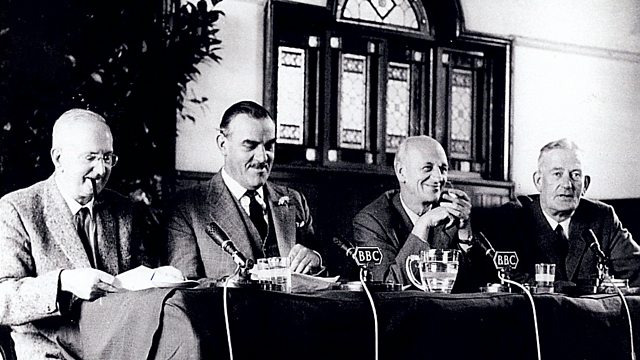Ashton-under-Lyne
Eric Robson and the team return to Ashton-Under-Lyne, where the first ever GQT was recorded in 1947, for the first in a three-part North of England Tour.
Gardeners' Question Time returns to its Northern roots, in the first of a three-part North of England Tour. This week, the team is at the Broadoak Hotel, at the same venue where the first GQT episode was recorded in 1947.
Here Bob Flowerdew, Bunny Guinness and Paul Peacock tackle the audience's gardening queries. In addition, Eric Robson remembers the GQT panellist Bill Sowebutts, born in Ashton-Under-Lyne.
Produced by Howard Shannon.
A Somethin' Else production for 主播大秀 Radio 4.
Questions answered in the programme:
Q. Why has it taken two local monkey puzzle trees so long to produce fruit? Are they true fruit or a nut?
A. They are nuts. Monkey puzzles have both male and female trees, so both must be present for pollination. They are also very large trees, which could explain why they take a long time to come to fruit.
Q. How do you know when to pick green jalapeno chili peppers?
A. It depends upon the variety. Find out what size your particular variety should be and use that as a guide. Jalapenos should be about 4 inches long, although low light and warmth this summer may have affected growth. You can keep them on the plant and pick them when you need.
Q. The leaves on my Victoria plum tree all have tiny holes in them. What is doing this and how can I discourage it without affecting next year's crop?
A. The damage may have been done by slug worms or caterpillars. However, this may be the result of shot hole caused by a bacterial canker. Give the tree food and water (if needed) to improve its health.
Q. Can the panel advise on saving seeds for next year? Should they be left on the plant or picked and dried?
A. Generally let the seeds dry off on the plant, then pick them and put them into a brown paper bag. You can cut the plants and hang them to dry with the seeds still attached. Take care to avoid any humidity or the seeds will rot.
Q. [1947 Question] How deep do plants and flowers need to be dug in? In areas with a lot of ground water, the trenches can flood. Is there another way of digging in plants and vegetables?
A. [2012 Answer] Raised beds are a good way of improving drainage and keeping the beds warmer.
A. [1947 Answer] Long parsnips and carrots may need to be dug in deeper, but other vegetables do not need to be as deep. Try and run trenches into a sump or neighbour's garden.
Q. My cherry tree blossoms every year and fruits, but the fruits drop off the tree when they are still small and green. Why is this happening?
A. They may not be being pollinated. A Morello is one of the best pollinating partners for most cherries and may help. Alternatively, a dose of lime may aid stone production.
Q. Should I take the flower heads off my Hydrangea stems now or should they be left over winter?
A. If we have a cold winter, the dead flower heads can protect the buds, but a wet winter can cause the flower heads to go mouldy. The panel advise to leave them unless they start to look very wet.
Q. The roots of a silver birch tree have started lifting up flagstones and breaking up tarmac. Is removal of the tree and its roots the only option?
A. A hard prune may result in associated die-back of the root system, but if the damage is already being done it suggests the root system is already of such a size that the problem will persist. The tree does probably need to be removed entirely.
Q. Fourteen years ago I planted a Wisteria, but as yet it has not flowered. How can we encourage this?
A. If a plant is growing happily, it may delay flowering. Shortening the long shoots in August and then in winter can help, as can potash or woodash.
Last on
More episodes
Previous
Next
Broadcasts
- Fri 28 Sep 2012 15:00主播大秀 Radio 4 FM
- Sun 30 Sep 2012 14:00主播大秀 Radio 4 FM
Six of GQT鈥檚 naughtiest gardening innuendos
When Gardeners' Question Time got mucky.
Podcast
-
![]()
Gardeners' Question Time
Horticultural programme featuring a group of gardening experts


